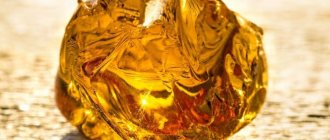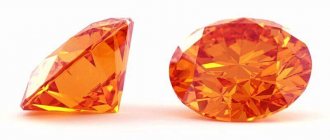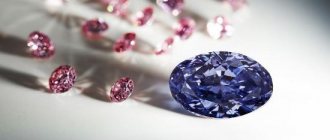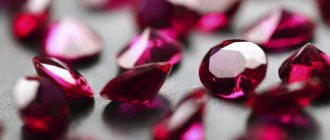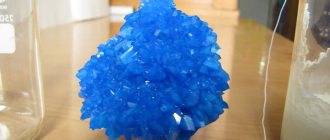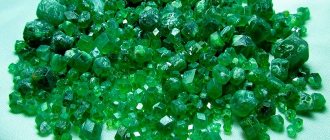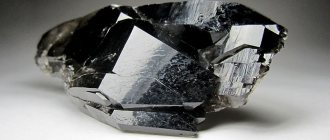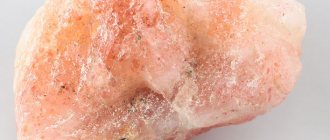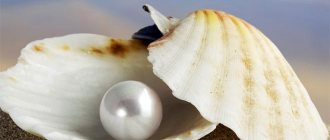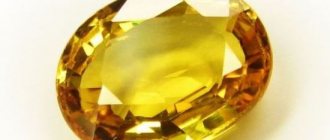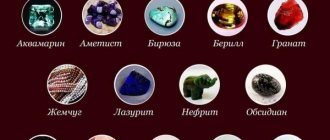1. Yellow stones - transparent and opaque - names, properties, photos
2. Varieties of gems and their shades - from yellow-green and lemon to orange and brown
2.1 Golden colored gemstones – what are they called, photo
2.2 Popular semi-precious minerals
2.3 Decorative and ornamental natural minerals of yellow color
3. Properties of solar gems
3.1 Unique healing properties of natural stones - how they are used in medicine
3.2 Magic power - what qualities are given to its owners
4. Which yellow talisman stones are recommended for women?
5. Which amulets stones are considered ideal for men?
6. Energy of stones – which zodiac signs are suitable for which specimens
6.1 Topaz - properties of a transparent crystal
6.2 Agate – who would like a honey-colored mineral?
6.3 Bright yellow opaque stones (jasper, jade, amber, chalcedony)
6.4 Light yellow opaque minerals
7. Why are stones of this color range valued among jewelers?
8. How to choose the right stone
8. Compatibility with other minerals in rings, earrings and other jewelry
Yellow gemstones are the most common in nature. Thousands of sunny stones are mined every year and are actively used in jewelry production. There are a huge variety of them. Let's find out which yellow stones are the most popular, what they mean, and whether you should buy them.
yellow diamond
Only one in a hundred thousand diamonds mined in the world has a yellow tint: the stone can range from very pale yellow to bright lemon color and from almost tangerine to cognac golden color. This color is given to the mineral by an admixture of lithium, and the more intense the shade, the higher the price of the crystal.
One of the first known yellow diamonds is Sancy. In 1570 he made Nicolas de Sancy, its owner, incredibly rich. Colored diamonds are very expensive. In 1997, an orange diamond weighing 13.83 carats was auctioned for a fabulous sum of 3.3 million.
But one of the world's largest yellow diamonds, Golden Empress, weighing 132 carats, belongs to the luxurious Graff Diamonds stone collection. Their yellow record holder, Graff Vivid Yellow, was sold in 2014 for $16.3 million.
It is worth noting that yellow diamonds are far from the rarest. Representatives of the red color are much more expensive, but they are also one in millions. And the main deposit of unique red diamonds - Arail - is about to dry up.
Advertising - Continued below
Magical and healing properties
Esotericists have calculated the influence of yellow stones on humans:
- give an optimistic outlook on life;
- strengthen the will;
- give self-confidence;
- promote networking;
- serve as a talisman against the evil eye and damage;
- bring peace and harmony to relationships in the home.
Jewelry with yellow stones should be worn all year round. In the summer they are recharged by the Sun, in the fall they lift your spirits, in the winter they warm you up, and in the spring they give you strength.
They treat the gastrointestinal tract, help the heart, and reduce blood pressure.
However, constant wearing (especially jewelry with yellow sapphire) can provoke causeless anxiety.
Yellow sapphire
Sapphires (a type of corundum) can come in a variety of incredible colors, although, of course, this gemstone is primarily known for its rich blue. Yellow sapphire is a rarer example of the mineral.
The shade can vary from lemon to amber; the color of the gem is often heterogeneous, with tints and stripes of a darker shade.
Sapphires with a pure yellow tint without inclusions are especially valued. Some specimens are so faintly colored that they can be classified as colorless. The average size of mined minerals does not exceed 8-10 carats. The deposits are located in Burma, Sri Lanka, Madagascar and Afghanistan.
By the way, yellow sapphires, like other stones of a sunny shade, are perfectly combined in jewelry with yellow gold. You can learn about which metals different jewelry stones are friendly with in this article.
Assortment of minerals
The names of yellow stones appear in all jewelry segments. Their range is created by impurities of lithium, aluminum, sulfur or iron. In amber it is a shade of natural resin.
Precious
Among the stones of the first level there are no simply yellow ones, but there are such varieties.
Diamond
Yellowishness is considered more of a flaw in transparent, colorless diamonds. However, rich color is rare. Out of a hundred thousand pebbles mined in the world, only one is found. This color is the merit of lithium. The more it is, the more intense the shade and the higher the cost of the stone. More about the diamond.
Yellow diamond ring
The number one yellow gemstone is the Sancy Diamond. Named after the first owner Nicolas de Sancy (XVI century). Later it was owned by the Russian princess Aurora Karamzina.
Sapphire
The classic color of this expensive variety of corundum is blue. Yellow sapphire is rare and comes in a range of shades from lemon to amber. The color is often heterogeneous, with iridescence and darkish stripes. It is created by aluminum impurities.
A yellow stone without inclusions from Sri Lanka is especially valued.
Necklace with yellow sapphire
The gem is protected by Jupiter, so you can wear jewelry with it on the eve of your 36th birthday. During this time, the planet revolves around the Sun three times, becoming as useful as possible to humans. Such a sapphire is powerful if given as a gift (including to yourself).
Semi-precious
There are several types of yellow stones of this jewelry value.
Topaz
The entire topaz family owes its name to this variety: “tapas” means yellow.
It was found first, the most common, and regally beautiful.
Transparency, strong brilliance, and full range of tones make it similar to citrine. Yellow is the natural color of the mineral. Others are rare or produced by heating.
Amulet with yellow topaz
The natural variety of topaz is called imperial - a bright, rich yellow-orange or orange-brown transparent stone.
Unlike other gems, the color of topaz does not depend on impurities. It is created by defects in the crystal structure. Yellowness results from the replacement of iron atoms.
Tourmaline
Yellow (along with blue) tourmalines are rare, most often the stones have a pink-crimson color scheme.
Stones with shades ranging from light yellow to brownish are called dravites. They are supplied only by Africa (Kenya).
Brown-yellow tourmaline
Color saturation, transparency, purity determine whether it will be a semi-precious stone or an ornamental one.
Citrine
A transparent, bright golden variety of quartz. Yellow color creates iron. Depending on its amount, the color varies from light lemon to rich, dark orange (such samples are called “Madeira”). A similar effect is obtained by calcining colorless samples.
Beads with citrine
Yellow jewelry quartz is less common than colorless quartz, it looks better, and therefore is more expensive and popular.
Industrial-scale mining is carried out in Brazil, the USA, Russia, and France.
Zircon
Natural stone is transparent, with a diamond shine. Also known as "Yargon". The color scheme is golden or yellowish. Yellowish specimens undergo heat treatment, becoming red (hyacinths), turquoise (starlites) or greenish.
Zircon
It is fragile, so zircon is not particularly in demand among jewelers.
Production has been established in Russia (Ural, Yakutia), Thailand, Norway, Canada, and Madagascar.
Heliodor
Heliodor is a transparent, honey-colored variety of beryl created by an admixture of iron. Its second name is “yellow beryl”. Translated from ancient Greek - “gift of the sun”.
Ring with Heliodor stone
The most expensive ones are rich yellow or amber. Specimens with a grayish, slightly yellowish tint are valued less. This is a heat treatment object that makes them conditioned.
Heliodor is often confused with citrine, topaz or quartz.
The favorite material of jewelers is stones of a natural golden hue. They are mined in Russia, India, Ukraine, Brazil.
Pomegranate
The classic stone is a deep red to burgundy color. Yellow is atypical and rare. The dark yellow stone is called andradite. Processed cabochon. We wrote more about pomegranate here.
Andradite stone
Ornamental
There are no exclusively yellow natural stones in this segment, only varieties.
Amber
Instances of sunny orange and yellow-brownish colors are considered amber classics; they are the most common (unlike black, white or green). Almost all amber raw materials are mined in the Baltic. The following types of mineral are endowed with this color: gedanite - yellow, fragile, therefore it is not processed, but is used as a collection material; kissellite – yellow, olive, green amber; shraufite – yellow-red or red.
Product made from natural amber
Jewelers use succinite - the highest quality type with a high percentage of succinic acid. It is dark brown with a deep yellow center.
Cornelian
A variety of quartz from the chalcedony group. The origin is volcanic, the color is uneven - striped or with other inclusions.
Cornelian
The orange-yellow and yellow variety of ornamental stone is called “lincurium”. To increase the color intensity, the mineral is heated.
Transparent and translucent specimens go to jewelers. A pendant with such carnelian is a good children's talisman.
Jasper
The opaque yellow variety of the full range (from pale to thick, even with a brownish or greenish tint) is common and affordable. It can be plain or with veins, patterned, “brocade”.
Jasper
It is durable, so it is suitable for all types of jewelry and decorative items (boxes, candelabra, stands, tabletops). It looks luxurious, Russian deposits are concentrated in the Urals and Altai. We wrote more about jasper here.
Agate
The yellow-reddish-brown color of agate is created by iron impurities. This is one of the most common agate shades. Yellow range with colors ranging from light coffee to brownish brown.
Yellow agate rings
Since Antiquity, the golden stone with sparkles has been valued as a source of inspiration and vitality. Travelers and merchants took yellow agate with them. They believed that a ring with an agate signet would help win the lawsuit.
Apatite
Phosphate mineral of different colors. Yellow apatites are distinguished by glassy luster and transparency from complete to zero.
Apatite
Jewelers use transparent, rich yellow stones with a diamond shine. They are usually no larger than five carats, with outstanding specimens being three to four times as massive. They are mined in Sri Lanka, Myanmar, Canada, and Italy.
Sphalerite
A sulfide mineral, also known as zincblende: its lemon coloring makes it similar to honey. Read more about it here.
Sphalerite
It is practically not in demand by jewelers due to its fragility. Jewelry is made to order and is very expensive. Raw materials suitable for processing are supplied by Mexico and Spain. More popular as a collector's item.
Nephritis
The classic mineral color is green. Yellow jade is rare and especially loved in China. The color range includes shades of yellow from light to deep dark.
Yellow bracelet with jade
Honey jade, with a rich yellowish-brown range of shades, is valued by rulers and ordinary Chinese. First of all, as a material for home interior products. Suitable for water signs of the zodiac.
Artificial
The rarity or high cost of golden minerals prompted people to create artificial stone:
- has been established at the Kaliningrad Amber Plant . This artificial amber is obtained from natural resins and is identical to natural stone.
- The “understudy” of natural mystic topaz is called nitrogen topaz . This is an iridescent orange-yellow artificial mineral, popular due to its affordable price and decorative properties.
Analogs of natural minerals exist for all types of stones; they are used mainly for jewelry.
Yellow topaz
Being a relatively inexpensive stone, topaz is mined in many countries and is widely used in jewelry. Externally, its yellow variety is very reminiscent of citrine or smoky quartz. The yellow tint for this semi-precious stone is the most natural; green, red, blue or purple topazes are much less common.
Advertising - Continued below
To change color, topaz is subjected to heat treatment. So, from yellow you can get a pink or green gem. Mining is carried out in Mexico, Brazil, Burma, and the USA.
Yellow stones and the Zodiac
The color of the minerals makes them similar to representatives of the element of Fire. Such gems in jewelry will recharge Sagittarius, Aries, Leo energetically, give them good spirits and confidence.
Yellow diamond, heliodor, sapphire, topaz are suitable for impulsive natures. With such talismans in jewelry, sanity will prevail over emotions.
Representatives of other zodiac signs will also receive bonuses. Ladies will find the desired tranquility of the family hearth, men - luck. This is a talisman for careerists of both sexes.
The only sign for which yellow stones are contraindicated according to the Zodiac is Scorpio.
Yellow tourmaline
As with other stones, in tourmaline the color is determined by impurities. The most commonly mined are pink and crimson tourmaline, as well as red varieties. The rarest are blue and yellow minerals.
Depending on the shade and transparency, crystals are classified as semi-precious or ornamental stones. Of particular value are polychrome samples - they can simultaneously contain yellow, crimson, green tints - the so-called watermelon tourmaline.
Yellow tourmaline is called dravite. The shade can vary from light yellow to brownish. There are a great many varieties of tourmaline: in addition to the main yellow tint, the crystal can exhibit an alexandrite effect or a “cat’s eye” effect.
Why do people love yellow?
Solar minerals are traditionally associated with pleasant things. They symbolize light, warmth and wealth. After all, gold, the number one metal, is also yellow.
There are no cold shades in this range, and the richness of colors allows you to choose an option depending on age, gender, social status, and finally, mood.
This color is held in special esteem in the East:
- The ancient Egyptians associated it with Ra, the supreme deity of the Sun. Intended exclusively for priests; even the aristocracy did not have the right to wear robes of the solar scale.
- This is the color of Buddha, and among Buddhists it symbolizes enlightenment.
- The Japanese are sure that the color of the Sun strengthens willpower and makes you braver.
Shades of sunny color are clearly associated with optimism, light, wealth, even luxury.
The rarity factor gives additional value to such minerals. There are fewer of them in nature than black, brown, red or blue ones.
Citrine
The stone is a type of quartz and has a bright golden color. It has high hardness and is very easy to process and cut. The yellow color of citrine is given by an admixture of iron; the color of the crystals can vary from light lemon to deep orange. Dark orange specimens are called "Madera". Yellow quartz is less common than clear quartz and is therefore more valuable.
Advertising - Continued below
Citrines are found in many countries, for example, it is mined in the north of Russia, America, and France. But the largest production is carried out in Brazil. Find out what other unusual and rare gems are found in this country in our article about local gems.
In addition to the natural method, a yellow tint can be given to the stone by heat treatment. Amethyst and rauchtopaz become golden or brown when exposed to high temperatures.
Yellow zircon
Natural zircon is an absolutely transparent crystal with a strong diamond luster, also called “jargon” or “yargon”. There are stones painted in yellowish or reddish shades. Thanks to heat treatment, minerals of a rich turquoise hue (starlite), green, and deep red (hyacinth) are obtained from yellow zircons.
Mining is carried out in Thailand, Norway, Canada, Madagascar. In Russia, zircon was found in the Urals and Yakutia. The stone is quite fragile and is not very often used as inserts in rings, earrings and pendants. But due to the similarity of English names, zircon is confused with cubic zirconia (zircon and cubic zirconia).
Heliodor (yellow beryl)
Heliodor, a type of beryl, has pleasant warm yellow shades and high transparency. Translated from Greek, heliodor means “gift of the sun.” The honey color of the crystal is given by an admixture of iron. The most valuable stones are those with a rich yellow or amber tint; grayish, white or too pale samples are less valuable.
Advertising - Continued below
By the way, yellow heliodor has a green “sibling” - precious emerald: they are both beryl.
The heliodor gemstone visually resembles citrine, topaz or quartz. It is mined in Brazil, India, Russia, Ukraine. After heat treatment, yellow beryls acquire bluish tints or become completely transparent.
Heliodor, which has a natural golden hue, is often used in jewelry. Stones of inexpressive colors, too pale or with a grayish tint are subject to processing.
Yellow apatite
Apatite, a phosphate mineral, also comes in a variety of colors: purple, blue, green, yellow. Yellow apatites have a glassy luster and can be completely transparent or, on the contrary, completely opaque, depending on the impurities. In jewelry, yellow or blue stones that have a pure diamond luster are most often used.
Mining is carried out in Burma, Canada, Italy, and Sri Lanka. The average weight of a crystal is up to 5 carats, less often - 15-20 carats.
Advertising - Continued below
Yellow agate
Agate ornamental stone is widespread in the world. The structure of the stone is layered, the color is uneven, with numerous inclusions. Often the stone is grown artificially for the jewelry industry. The yellow color of the mineral is given by inclusions of iron oxides.
Ornamental agate is a hard mineral with a glassy luster after polishing. Has high resistance to acids. The yellow shade can be very varied - from very light to brownish brown.
Sphalerite
A mineral from the class of sulfides, it is also called zinc blende: “honey” with a lemon color and “ruby” with an orange-red tint of the mineral. A very fragile stone, it is practically not used in the jewelry industry due to the complexity of cutting. Some examples are found in private jewelry collections. Rare stones suitable for processing and subsequent insertion into jewelry are mined in Spain and Mexico.
Decorations
Yellow stones are loved by jewelers and stone cutters. Precious and semi-precious stones in jewelry look luxurious and elegant. Even if there are many of them in one outfit. This is one of the advantages of yellow stones over red, green or black: these minerals need to be worn “in doses”.
“Golden” gems are universal:
- in beads, necklaces, brooches, earrings combined with other shades;
- suitable for men and women, children and people of advanced age;
- There are options for “going out” and for office everyday life.
In any case, the owner of jewelry with yellow stones will attract attention and make people feel good.
The chalcedony family makes the interior magnificent. Gems become frames for paintings, mirrors and photos, vases, and figurines.
You need to care for products made from yellow minerals in the same way as representatives of other colors.
